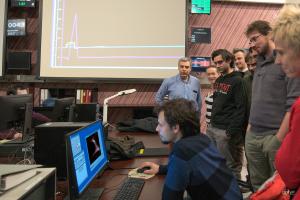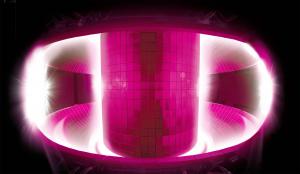Merry plasmas!
On 14 December, at 6:03 p.m., a flash of light illuminated the vacuum vessel of WEST, the rejuvenated Tore Supra tokamak designed to serve as a test bench for ITER.
This first plasma rewarded four years of hard work that involved stripping out the 30-year-old machine, adding magnetic coils to confine the originally circular plasma into a "D shape," and trading its carbon-carbon fibre (CFC) "limiter" for an ITER-like tungsten divertor.
On the very same day that the IRFM team was (discreetly) celebrating WEST's first plasma, another team, at the other end of the world, also had an achievement to announce: a record 70-second H-mode plasma had just been recorded by the Korean superconducting tokamak KSTAR.



